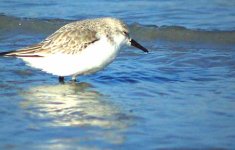I have just bought second hand Canon 350 and have a Tamron 200-500 lens. I am trying to take pictures of water birds so I went to Martin Mere to practice on some swans. It was a nice day. The Swans are all too white!! I don't know what the term is for this - but could anybody advise please on the settings for my camera and also on editing. I have been given Adobe Elements No 2.
Thank you in anticipation
Ellie
Thank you in anticipation
Ellie




